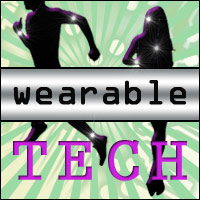
The wearables market heated up last week with Apple’s introduction of its Watch and payment processing service, and the implications for CRM are interesting.
First off, the announcement shows how very young the wearables marketplace is and how far it has to go.
Second, even though wearables are by nature devices intimately connected to us and our motivations, they are still devices, which should concern us. Why? Because they have the potential of buying things for us that we might not realize. First thing first.
Young Market
Samsung and other Asian manufacturers are not wasting any time waiting for California to invent wearables that they will later copy and manufacture. They already have a handful of wearable devices.
Google has its Android Wear, Apple has its Watch, and Salesforce has a developer’s kit for all of them.
A host of new companies are trying to make a mark with their devices, but we’re already hearing a lot about killer apps or their absence. The New York Times last week published an article that seemed to make lemonade out of lemons, reporting that in releasing a software developer kit, Apple was assuming the market would innovate toward the next killer app.
That’s certainly true, but we didn’t have to wait for a use case or killer app for the iPhone or iPad; those devices arrived with their reasons for being well documented. So introducing a watch is somewhat risky and somewhat ho-hum for Apple.
It’s risky because it didn’t introduce anything else in a family of devices, like glasses, and because the market is awash in digital watches. It’s ho-hum for the same reason. It will be hard to differentiate from there. You really want to believe that the company is working on another wearable device that will come with a more eureka! moment.
This brings up more questions — like how many of these gizmos will we really need? The iPhone consolidated a lot of things — phone, camera, music device, email/Internet access device — all into a single manageable handful. Are we about to go in the opposite direction, needing one device for recording video, another to get us into the building, another to track our health, and still another to tell the world we’re in the building? What would Elvis do?
So it seems to me that the wearables wars, and there will be more than one, first will be about form factor and functionality and then maybe about apps ecosystems — and we haven’t even gotten to killer applications yet. So watch this space, it’s going to be interesting around here for a while.
Devices as Part of the IoT
The prospect of devices doing our bidding sparks one major concern, which is what happens if the device gets a little carried away and the cost of its help turns out to be large? As a nation, we’ve been digging ourselves out of a debt hole ever since the housing crisis in 2008. As many people get their heads above water, will devices suddenly submerge us all over again?
Like it or not, we’re entering an era when customers own consumers, and consumers have credit card numbers and a certain amount of autonomy to make purchases on behalf of the customer. Teaming up the consumer with Apple Pay or any other payment service will drain more than one bank account before we get it right. And what about hacking?
The last time I saw so much technology and potential was when SaaS got its act together. Definitions were everywhere, and there were few standards to guide us. The world of wearables and the IoT present the same challenges. Eventually, it all gets sorted out, but in the interim, there’s plenty of opportunity for innovators and charlatans.
I am usually a best-of-breed guy, provided there are adequate bridges between technologies, but the wearables revolution is going to need to come with bridging to be credible.
Fortunately, most vendors have reached that conclusion, and there are some good products on the market already. Nonetheless, I am at the moment coming down on the side of the platform that can seamlessly generate apps for the new devices complete with well-behaved integration.
I hate to repeat myself, but we haven’t even identified the/a killer app yet. This thing is in the very early stages and it will consume a big chunk of one’s career.






















































